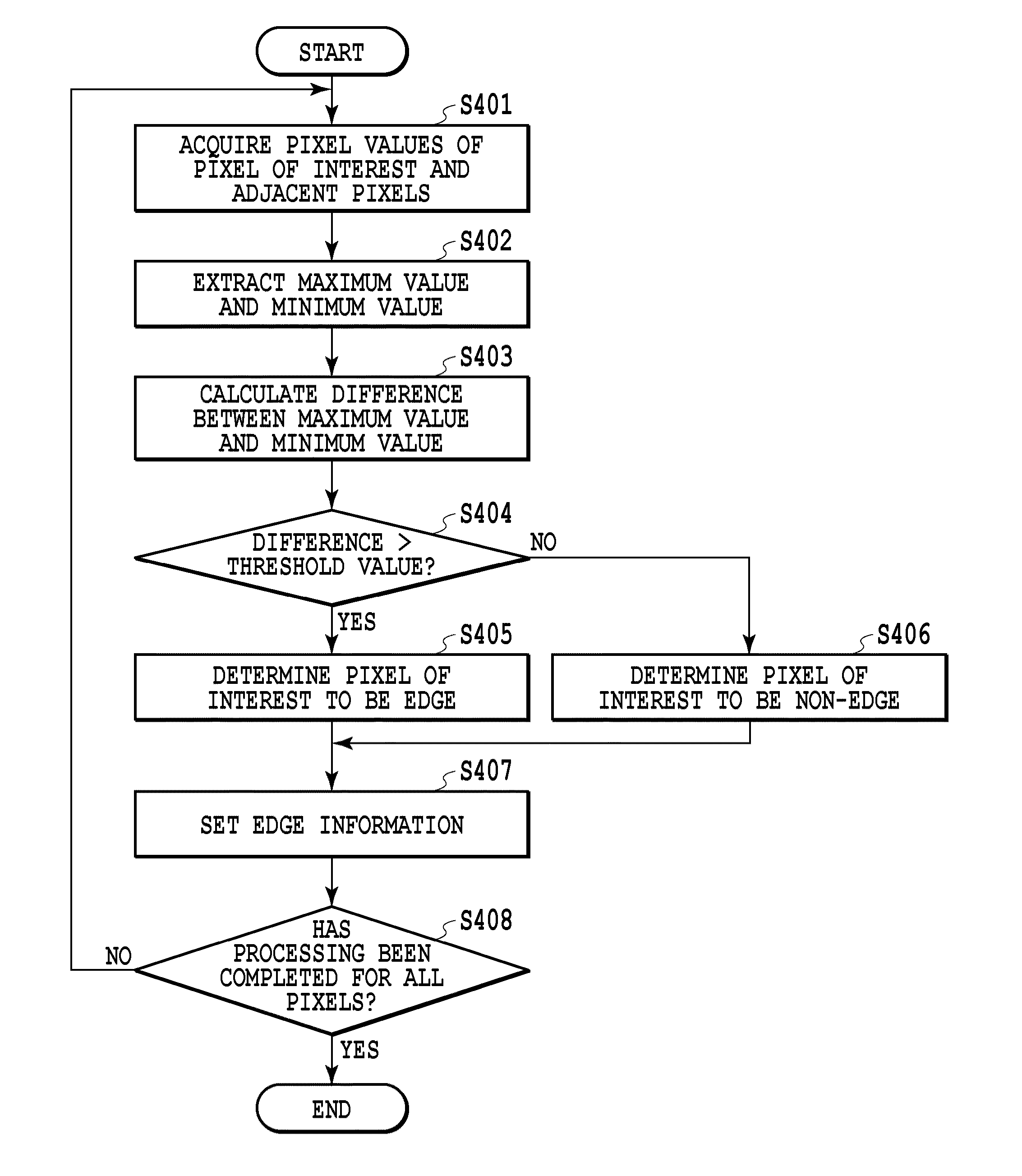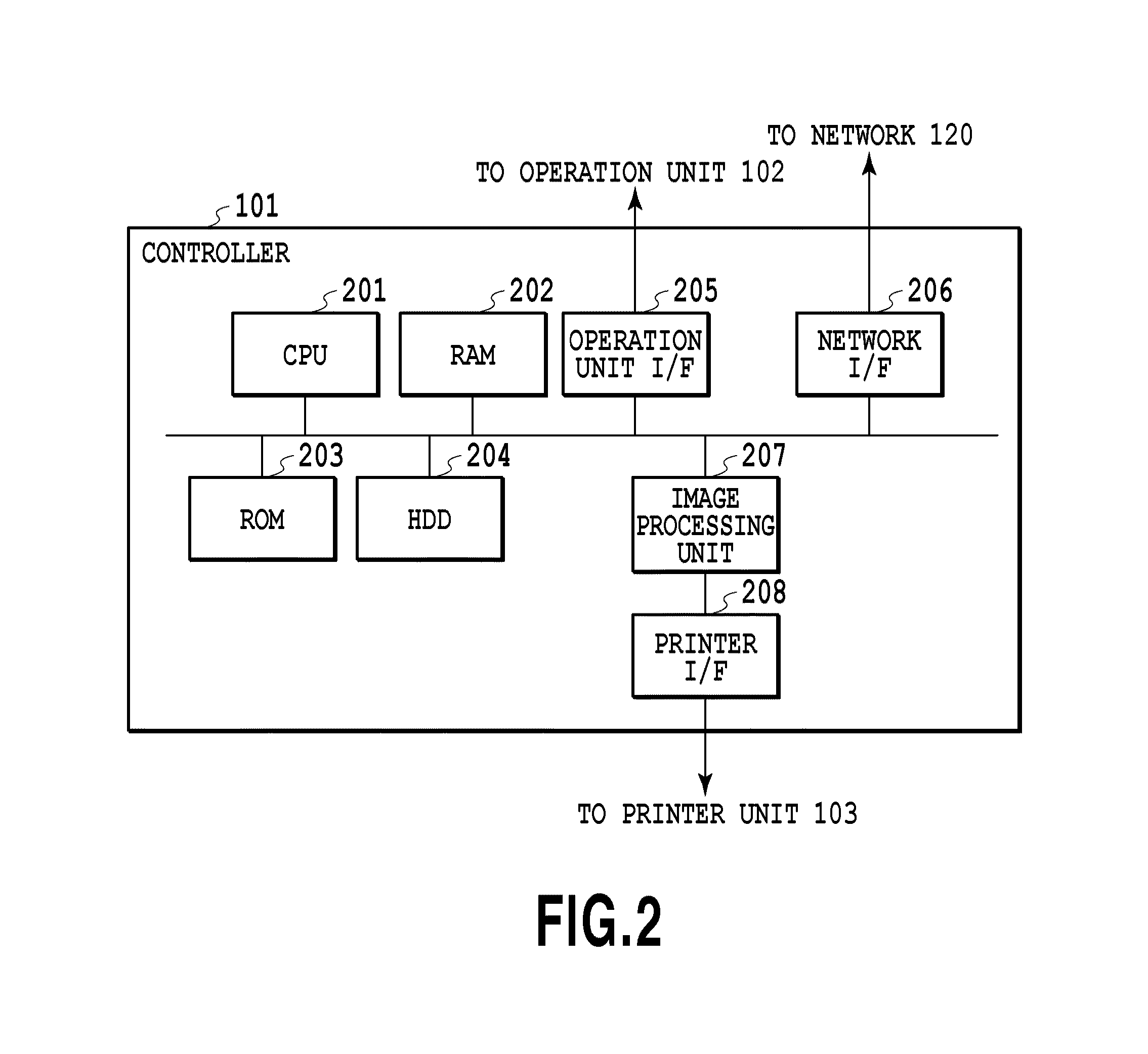Image processing apparatus, image processing method, and storage medium
a technology of image processing and image processing method, applied in the direction of digital output to print unit, digitally marking record carrier, instruments, etc., can solve the problem of degrading visual recognizability
- Summary
- Abstract
- Description
- Claims
- Application Information
AI Technical Summary
Benefits of technology
Problems solved by technology
Method used
Image
Examples
first embodiment
[0022]FIG. 1 is a diagram showing an example of a configuration of a printing system according to the present embodiment. The printing system shown in FIG. 1 includes an image forming apparatus 100 and a host computer (PC) 110 and both are connected to each other via a network 120, such as a LAN. As the connection method, for example, it is possible to apply the serial transmission method, such as USB, and the parallel transmission method, such as Centronics and SCSI.
[0023]The image forming apparatus 100 includes a controller 101, an operation unit 102, and a printer unit 103.
[0024]The controller 101 controls the general operation of the image forming apparatus 100. Details thereof will be described later.
[0025]The operation unit 102 includes a key for a user to give various instructions and, for example, a liquid crystal monitor to display various kinds of information that a user should be notified of. In the case where the liquid crystal monitor has a touch screen function, it is ...
second embodiment
[0068]In the first embodiment, the color of the pixel of the edge portion of the input image data is converted into an achromatic color and the density of the color of the pixel of the non-edge portion is decreased. But in the case where the object is a small character or complicated graphics, edges cluster together, and therefore, it is not possible to considerably reduce the toner consumption. Consequently, an aspect is explained as a second embodiment in which the toner consumption is reduced by thinning proximate edges in the case where edges cluster together. Explanation of the portions in common to those of the first embodiment is omitted or simplified and in the following, different points are explained mainly.
[0069]In the present embodiment, in the edge detection unit 303, after the edge detection processing described previously is performed, the processing to thin proximate edges, to be described below, is performed.
[0070]FIG. 11 is a flowchart showing a flow of proximate e...
third embodiment
[0087]In the case where an object to be drawn is a specific kind of object having a complicated shape, such as a character, the number of edge portions is great. In the first and second embodiments, the edge pixel of the input image data is detected and the color of the edge pixel is converted into an achromatic color, but in the case where the object is a character or the like and number of edge portions is great, there is a possibility that visual recognizability will be degraded because the original color of the object to be drawn cannot be identified. Consequently, an aspect is explained as a third embodiment in which in the case where the object to be drawn is an object having a complicated shape, such as a character, the color of the pixel of the edge portion is not converted into an achromatic color, but is drawn with the original color. Explanation of the portions in common to those of the first and second embodiments is omitted or simplified and in the following, different ...
PUM
 Login to View More
Login to View More Abstract
Description
Claims
Application Information
 Login to View More
Login to View More - R&D
- Intellectual Property
- Life Sciences
- Materials
- Tech Scout
- Unparalleled Data Quality
- Higher Quality Content
- 60% Fewer Hallucinations
Browse by: Latest US Patents, China's latest patents, Technical Efficacy Thesaurus, Application Domain, Technology Topic, Popular Technical Reports.
© 2025 PatSnap. All rights reserved.Legal|Privacy policy|Modern Slavery Act Transparency Statement|Sitemap|About US| Contact US: help@patsnap.com



